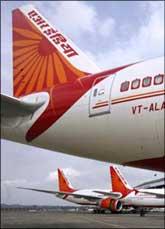Rai Bahadur M.S. Oberoi
Founder Chairman, The Oberoi Group
- Early Life
Mr. M.S. Oberoi completed his primary education in Rawalpindi and moved to Lahore for his Bachelor’s degree. Shortly thereafter, to flee the ravages of a virulent plague, he went to seek his fortune in Shimla, the summer capital of British India. Arriving penniless, he found a job at a monthly salary of INR 50, as the front desk clerk at the Cecil Hotel. Today, The Oberoi Group owns the hotel The Oberoi Cecil where the young Mr. Oberoi found his métier.
The diligence, enthusiasm and intelligence displayed by Mr. Oberoi impressed Mr. Grove, the manager of the hotel. A quick learner, Mr. Oberoi did not restrict his efforts to fulfilling the job description of a desk clerk but sought and shouldered additional responsibilities. A few years later, when Mr. Clarke acquired a small hotel he asked Mr. Oberoi to assist him. It was here, at Clarkes Hotel, that Mr. Oberoi gained first hand experience in all aspects of operating a hotel.
- Budding Entrepreneur
Over several years, Mr. Oberoi had purchased shares in Associated Hotels of India (AHI), which owned Cecil and Corstophans hotels in Shimla, Maidens and Imperial hotels in Delhi and a hotel each in Lahore, Murree, Rawalpindi and Peshawar. In 1943, Mr. Oberoi acquired controlling interest in AHI. He thus became the first Indian to run the country’s largest and finest hotel chain. In the tumultuous years just prior to Indian independence, Mr. Oberoi met and intimately interacted with the would-be leaders of Free India, all of whom were, at one time or other, guests at his hotels.
- International Pioneer
This achievement was enhanced with the opening of the 35-storey Oberoi Sheraton in Bombay, in 1973. Mr. Oberoi was the first Indian to work in association with international chains to woo international travellers to India. This led to a heavy influx of international travellers and foreign occupancy soared to an average of 85%. This enabled the Oberoi Hotels to significantly contribute to India’s foreign exchange earnings.
Another pioneering landmark was the establishment in 1966 of the prestigious Oberoi School of Hotel Management, recognised by the International Hotel Association in Paris. Considered India’s premier institute, the school is now known as The Oberoi Centre of Learning and Development and continues to provide high quality professional training in hospitality management.
Other notable firsts were the decision to employ women in his hotels and to establish a chain of ancillary industries producing and supplying items like consumables and stationery to ensure the highest quality. The Oberoi Group was also the first to start flight catering operations in India, in 1959. The Oberoi Flight Services, located in New Delhi, Mumbai, Cochin and Chennai, provide in-flight meals of international quality to reputed airlines.
Mr. Oberoi realised that the hotel and hospitality business is greatly dependent on travel agents, a vital element in the distribution chain. Therefore, he decided to establish his own travel agency. Mercury Travels, part of The Oberoi Group, ranks amongst the leading travel agencies in India. With vision and imagination, Mr. Oberoi converted old and dilapidated palaces, historical monuments and buildings into magnificent hotels such as The Oberoi Grand in Calcutta, the historic Mena House Oberoi in Cairo and The Windsor in Australia. It was, in fact, in the face of severe opposition that the State Government of Victoria awarded Mr. Oberoi the lease of The Windsor, a heritage building in Melbourne. He personally supervised the restoration of the hotel to its original grandeur and later acquired it. The Oberoi Cecil in Shimla, built in the early 20th century, reopened in April 1997 after extensive and meticulous renovation.
- Awards and Honours
- Globalisation of The Oberoi Group
Today, Oberoi Hotels & Resorts in Indonesia, Egypt, Mauritius, Saudi Arabia and India add value and distinction to their host countries.
- Foundations of the Future
In the luxury category, The Group opened The Oberoi Rajvilas, Jaipur; The Oberoi Cecil, Shimla; The Oberoi Udaivilas, Udaipur; The Oberoi Vanyavilas, Ranthambhore; The Oberoi Amarvilas, Agra; Wildflower Hall, Shimla in the Himalayas; The Oberoi, Lombok, Indonesia; The Oberoi, Sahl Hasheesh, Egypt; The Oberoi, Mauritius and The Oberoi Zahra, Luxury Nile Cruiser, Egypt.
The Group employs more than 12,000 people worldwide and operates 28 hotels and three cruisers in five countries.
Mr. Oberoi’s achievements and successes did not, however, take from his simplicity and old-fashioned charm. He retained, until his death in May 2002 at the age of 103, a unique humility. He was fond of saying, “I have been able to accept the challenge and make good. There is comfort in knowing that whatever little I have achieved has also helped to raise the prestige of my country.”








 "Air India will expand its MRO capabilities at its Mumbai to include GE90 engine overhaul. The current schedule calls for the Mumbai facility to be certified for basic GE90 MRO by 2012. Eventually, Air India plans to build a new MRO facility in Nagpur that will include GE90 testing capabilities," said a release from GE Aviation.
"Air India will expand its MRO capabilities at its Mumbai to include GE90 engine overhaul. The current schedule calls for the Mumbai facility to be certified for basic GE90 MRO by 2012. Eventually, Air India plans to build a new MRO facility in Nagpur that will include GE90 testing capabilities," said a release from GE Aviation.
